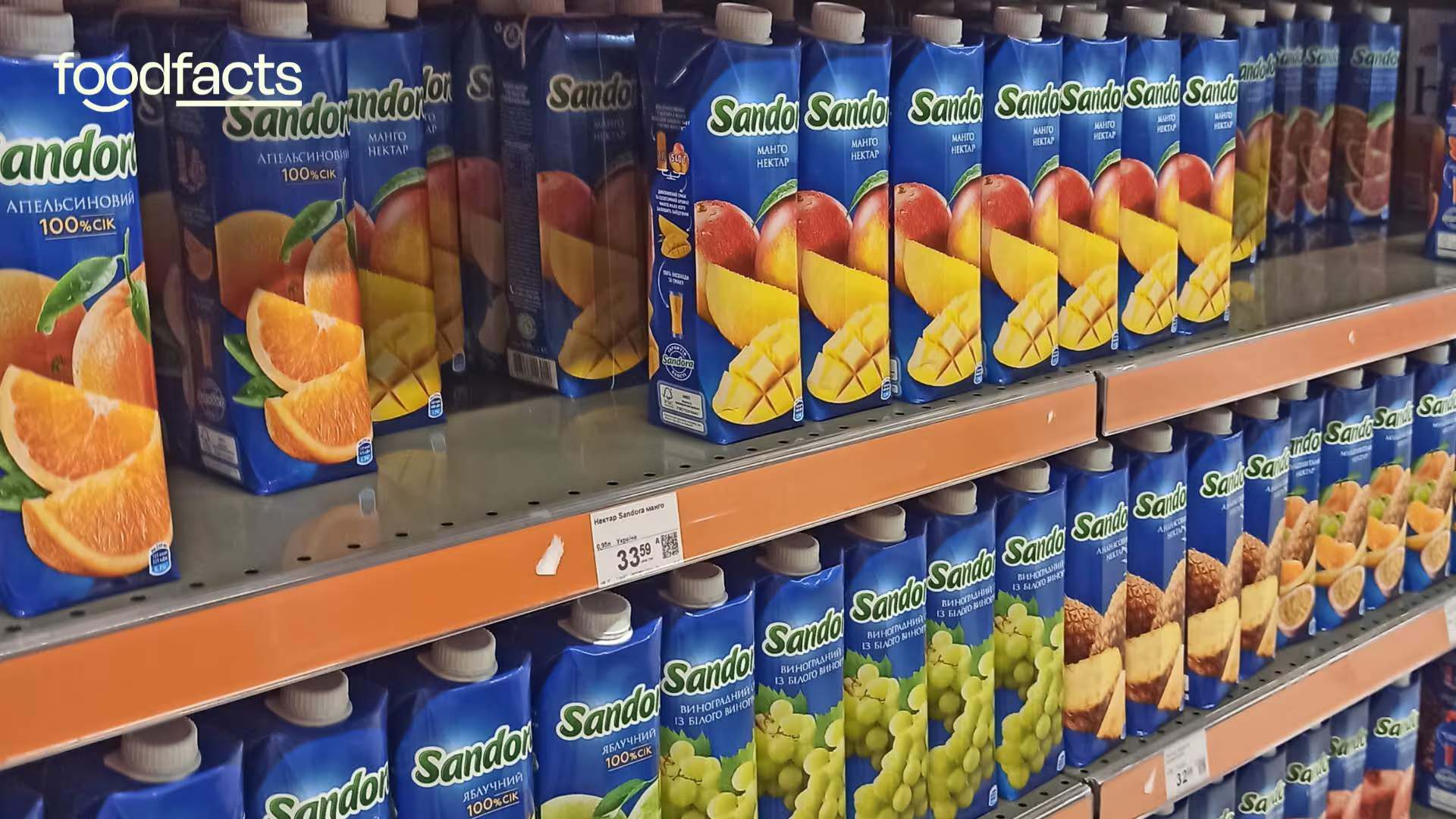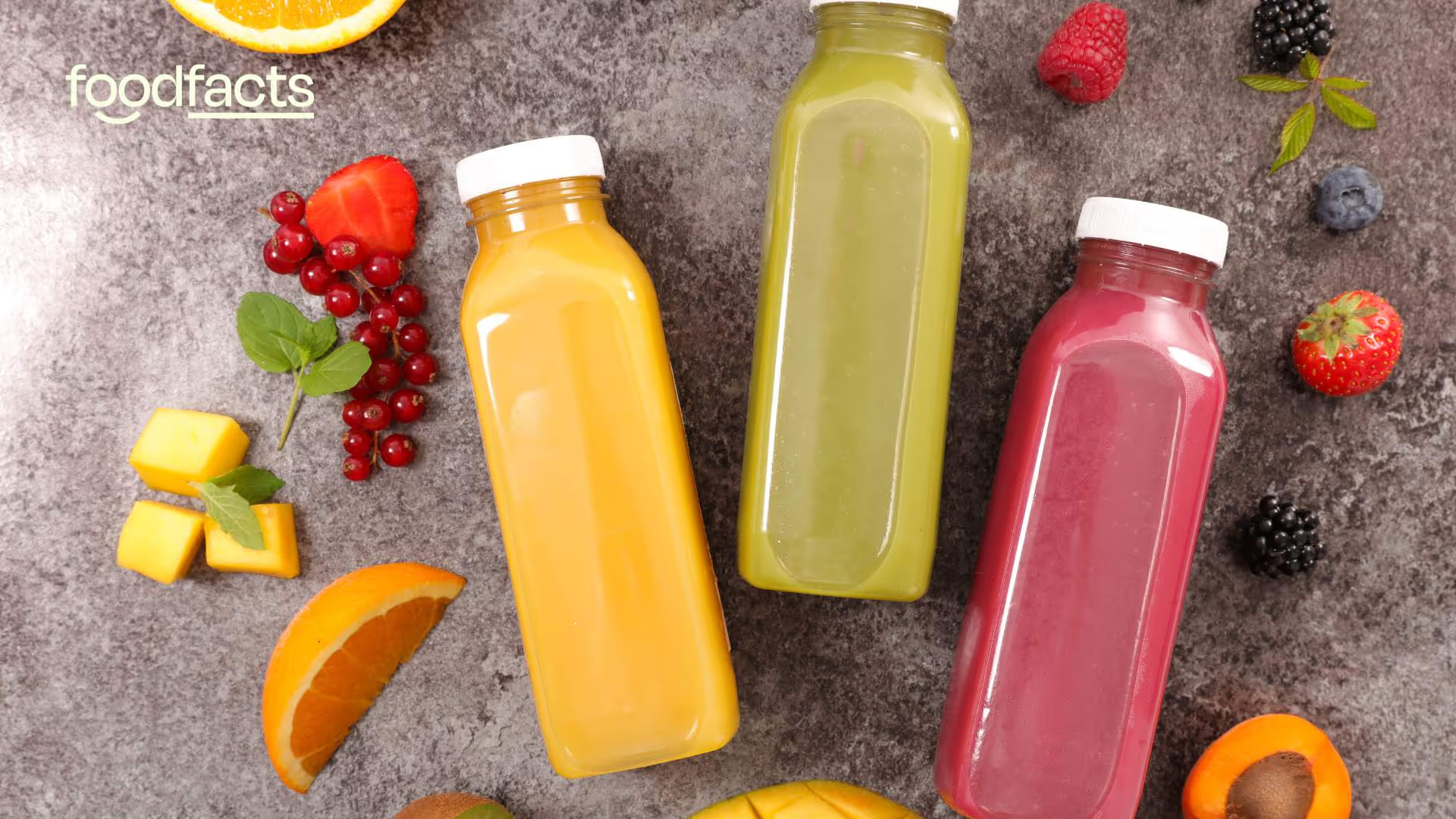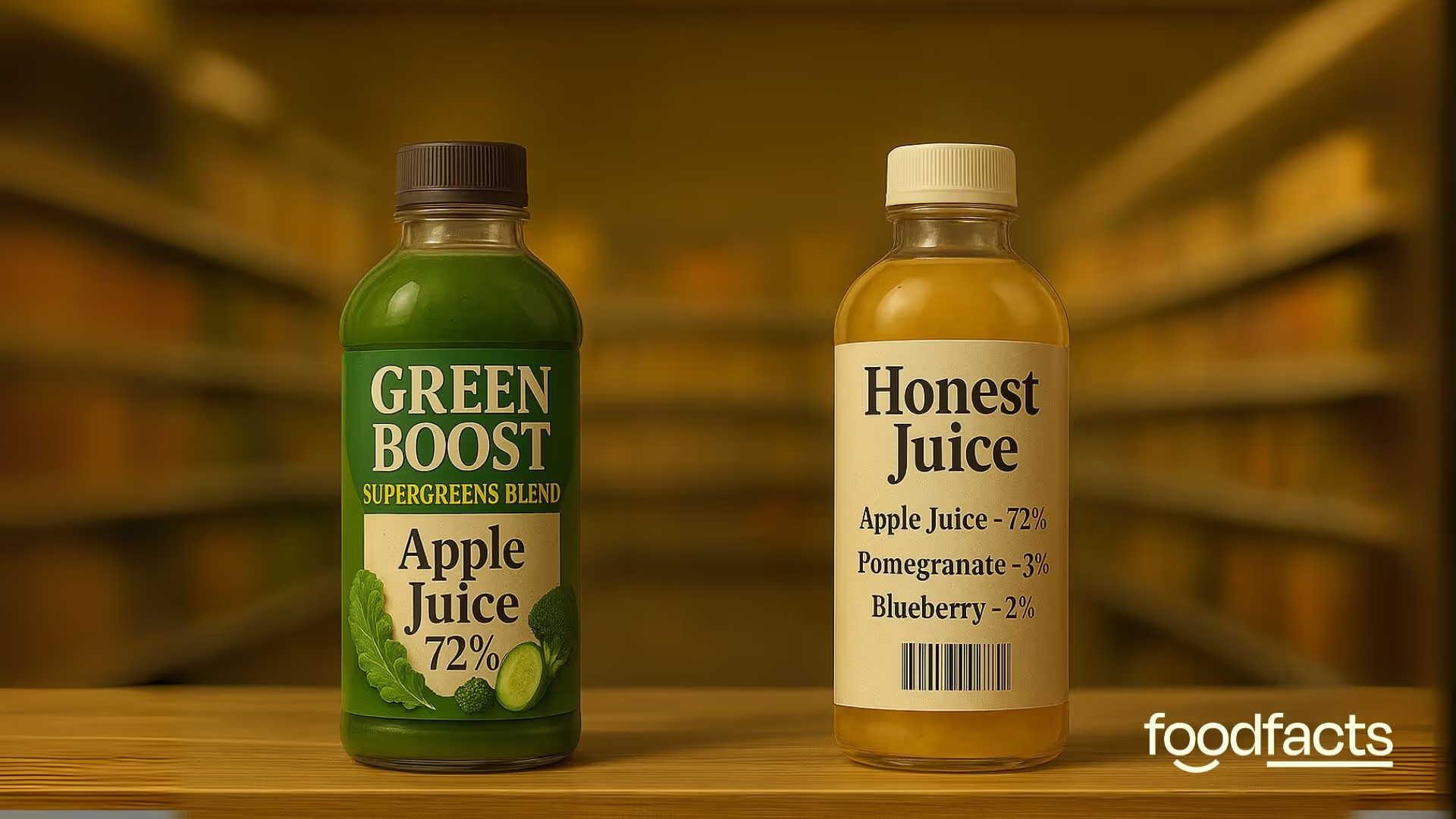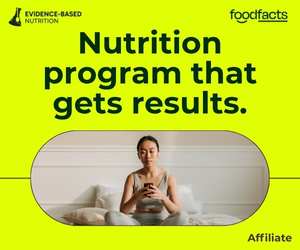
Applejuicification: why consumers deserve clearer juice labels





Coral Red: Mostly False
Orange: Misleading
Yellow: Mostly True
Green: True
Learn more about our fact-checking policies
Walk down any supermarket juice aisle and you're greeted with an abundance of options: berry bursts, exotic blends, antioxidant elixirs. But beneath the vibrant names and premium prices, a single, often unacknowledged ingredient dominates: apple juice.
This quiet dominance—now referred to as applejuicification—reflects a wider systemic issue in the food industry, where one affordable fruit juice is used as the primary base in countless “mixed” beverages, without clearly informing consumers.
Apple juice is not inherently problematic. But its role as a hidden filler raises legitimate concerns about labeling transparency, nutritional perception, and consumer trust.

A Brief History of Applejuicification
Understanding how we arrived here requires looking back at the economic and regulatory forces that shaped today’s juice industry.
1970s–1980s: Industrial Apple Juice Goes Global
The groundwork for applejuicification was laid in the late 20th century. Advances in juice concentration technology made it possible to process, store, and ship apple juice in bulk at low cost. At the same time, global production—especially in the United States, China, and Poland—expanded rapidly, creating a surplus of apple juice concentrate.
As apple juice became one of the most affordable and stable juice products available, it quietly became a commodity ingredient. Its mild flavor and light color made it the ideal foundation for blending.
1990s–2000s: Exotic Fruits, Familiar Base
As health-conscious and adventurous consumers began seeking new flavors—acai, pomegranate, passionfruit—the juice market responded with “exotic blends.” However, sourcing these fruits at scale posed logistical and financial challenges.
To meet demand while keeping prices low, manufacturers began using apple juice as the bulk ingredient, blending in small amounts of the more expensive or harder-to-source fruits. Often, the front of the label would emphasize these minor ingredients, while the back quietly listed apple first.
This marked a turning point: a shift from honest representation of juice content to strategic formulation designed around marketing potential.
2010s–Today: A Quiet Industry Norm
By the 2010s, applejuicification was no longer a workaround—it was standard practice. Juice blends that contain over 60% apple juice are common across supermarkets globally. In some jurisdictions, lax labeling laws allow any fruit to be named or pictured on packaging, even if it makes up less than 1% of the total volume.
While not technically deceptive under current regulations, this practice contributes to a misleading perception of choice and nutrition. The vast majority of shoppers remain unaware that their “berry boost” is mostly apple.

The Transparency Gap
The key issue with applejuicification is not the use of apple juice itself—it’s the lack of clarity about how much is used and what role it plays in the product. Marketing language like “superfruit blend” or “antioxidant fusion” suggests a health-forward, fruit-diverse product. In reality, these are often apple juice concentrates with flavorings or trace purées added for effect.
This gap between perception and reality raises three key concerns:
1. Misleading Nutritional Expectations
While apples are nutritious in whole form, apple juice—especially from concentrate—is high in sugar and low in fiber. When it replaces nutrient-rich fruits like pomegranate or blueberry, the overall health profile of the product drops. Apple juice still provides important vitamins and minerals.
2. Distorted Consumer Choice
When nearly every mixed juice on the shelf uses the same base, the variety is illusory. It becomes harder for consumers to make meaningful choices based on taste, health benefits, or ethical considerations.
3. Unjustified Premium Pricing
Products marketed with exotic fruit identities often command higher prices, despite containing very little of those fruits. In many cases, consumers are paying more for marketing than for ingredients.

A Case for Reform
This is not an isolated issue. It reflects a broader need for food labeling systems that prioritize consumer understanding over commercial flexibility. There are a few practical steps regulators and manufacturers could take:
- Mandate percentage disclosure for all featured fruits on front-of-pack.
- Restrict fruit imagery and naming to reflect actual ingredient proportions.
- Encourage voluntary transparency from brands that value consumer trust.
How to Spot Applejuicification
- Flip the bottle. Ingredients are listed by quantity. If apple or grape juice comes first, that’s your base.
- Look for percentages. Ethical brands are beginning to list fruit content clearly. A bottle that says “contains 3% pomegranate” is telling you something important.
- Watch for vague terms. “Fruit juice blend,” “tropical fusion,” or “with antioxidants” often signal more marketing than meaningful nutrition.
Apple Juice Isn’t the Problem, But Obscured Information Is
It’s important to emphasize: apple juice is not the villain here. It’s a versatile, widely enjoyed product with a long history in many households. But its overuse as a silent filler—coupled with misleading branding practices—raises valid questions about how food is sold, perceived, and trusted.
In a time when consumers are more conscious of health, sustainability, and ingredient sourcing, the burden should not fall on them to decode fine print. Labels should speak clearly. Ingredients should reflect the front of the package. And pricing should correspond to what’s inside.
It’s also not just ingredients that are prone to false marketing. Living conditions for farmed animals are also often misleadingly advertised. Greater transparency in the food system must be wide-reaching, not just restricted to certain products.
Applejuicification is a symptom—not just of profit-driven formulation, but of regulatory gaps that allow marketing to outpace meaning. The solution isn’t to vilify apple juice, but to demand that juice bottles tell the full story.

Sources + Further Reading:
Daily Mail (28 March 2024). Shoppers left raging over 'applejuiceficiation': People are discovering that 'tropical' and 'berry' flavour drinks from the likes of Innocent and Juicy Water are largely apple juice
Healthline. What Is Juice Concentrate and Is It Healthy?
The Guardian (1 April 2024). Applejuicification: why the fruit is found in so many mixed juices



Foodfacts.org is an independent non-profit fact-checking platform dedicated to exposing misinformation in the food industry. We provide transparent, science-based insights on nutrition, health, and environmental impacts, empowering consumers to make informed choices for a healthier society and planet.
🛡️ Stand Against Nutrition Misinformation
Misinformation is a growing threat to our health and planet. At FoodFacts.org, we're dedicated to exposing the truth behind misleading food narratives. But we can't do it without your support.
Your monthly donation can:
✅ Combat viral diet myths and corporate spin
✅ Support our team of dedicated fact-checkers and educators
✅ Keep our myth-busting platforms running

Was this article helpful?















.svg)
